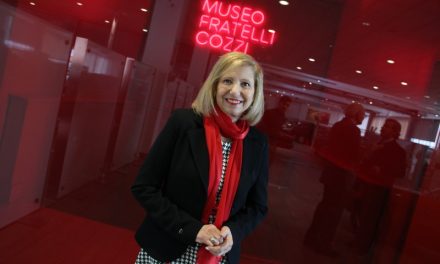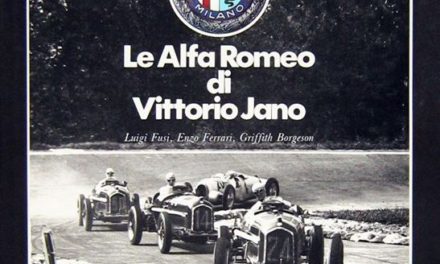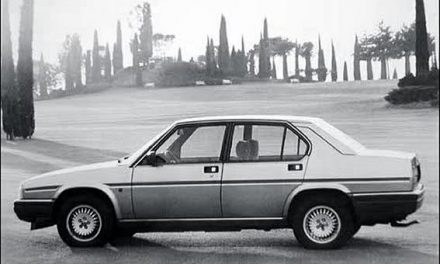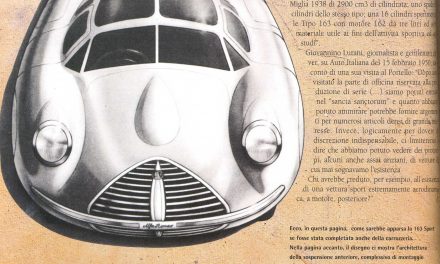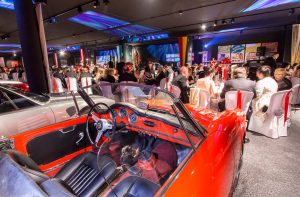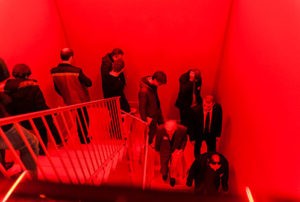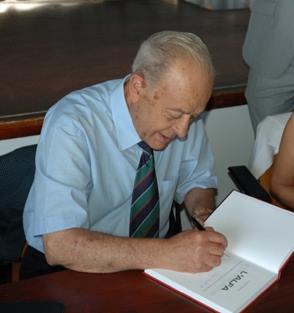
Elvira tells
Elvira tells Domenico Chirico
22 FEBRUARY, 2017
Elvira Ruocco has joined the museum team and in the "Elvira Racconta" section she will share curiosities and anecdotes that she does not know or remember. Together with her we will retrace the legendary history of Alfa Romeo.
I'm sorry I couldn't go to the funeral of Mr. Chirico, whom I was very fond of. I knew he was ill and I had called Mrs. Chirico several times to hear from him. The last call made me understand that his condition had worsened. I remember that she wanted to put him on the phone but he didn't want to talk tome.
As with the other great characters of the Alfa that I had the honour and also the fortune to know and that unfortunately are no longer there, the esteem and admiration that I felt for Chirico had turned over time into friendship. When I worked in Alfa he often came to visit me for his research. He wrote interesting articles on Alfa's engines and cars for the magazine Auto Tecnica.
As I did with Mr. Busso, I suggested he put all this material together and make it into a book. He accepted my advice and the book "L'Alfa e le sue Auto" was published and presented by the Alfa Sport Club in Luino on June 24, 2007 (and the choice of this date was not by chance....).
After the presentation he invited me to lunch at his house with Guido Moroni and on that occasion he took to the piano to play a song by my father. I also remember that he came to see me perform at the Parish Theatre of Mazzo di Rho and I was very happy.
He was a kind and sensitive person, his passing is a great loss for Alfa Romeo and his family.
I want to imagine that he found himself with Moroni and Busso, sitting at a table in front of a drawing talking about Alfa, as they did in the Archive.
Rest in peace, dear engineer.
THE INTERVIEW THAT ELVIRA CONDUCTED IN 2010 WITH ING. CHIRICAL DOMENICO DEDICATED TO THE BIRTH OF ALFASUD
"Dear listeners and friends Alfisti, good morning from Elvira Ruocco to the microphones of Radiorizzonti . Last week I told you that I was going to talk about Alfasud with a special guest: engineer Domenico Chirico, who for many years was one of Alfa Romeo's design managers. Good morning Engineer, it is really a pleasure to have you here at Radiorizzonti's microphones and an honour for me. Before starting to talk about Alfasud, I would like you to briefly tell us when you joined Alfa and what your professional experience was.
.-.-..-.-.-.-.-.-.-.-.-.-.-.-.-.-.-.-.-.-.-.-.-.-.-.-.-.-.-.-.-.-.-.-.-.-.-.-.-.-.-.-.-.-
CHIRICO
Signora Ruocco has managed to describe with a few brief jokes an industrial history that continues to this day with a factory in the South of Italy that has always built Alfa Romeo brand vehicles.
The name Alfasud brings to mind Rudolf Hruska, a person who linked his name to the factory in Pomigliano d'Arco and the car built here.
RUOCCO
Who was Hruska? When did he arrive in Alfa Romeo?
CHIRICO
Hruska, an Austrian, engineer and also an excellent driver, had trained before the war at the Porsche studio and had participated in the industrial development of the Volkswagen car, the people's car wanted by Hitler.
During the war he was destined to the coordination of the war vehicles studied by Porsche, such as the Tiger tank, and, under this guise, he came to Italy where he became friends with various people, among them Tazio Nuvolari and Giuseppe Luraghi, the future President of Alfa Romeo.
Hruska came to Alfa Romeo in 1959 as a technical consultant to Finmeccanica to optimise the production of the 1900 car produced in those years.
We jump to 1967 when, after IRI's decision to set up a car factory in the south of Italy, Luraghi entrusted this task to Hruska who, in the meantime, had become very Italianized and became a "alfista" to all intents and purposes.
RUOCCO
How was the Pomigliano plant born?
CHIRICO
Hruska availed itself of the collaboration of former Italian managers of the French car factory Simca which had been acquired by the American Chrysler ( ... the usual Chrysler!).
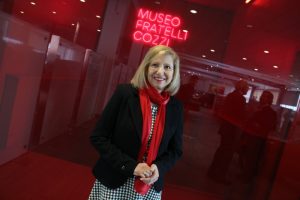
RUOCCO
Who designed the car?
CHIRICO
It was not the traditional Alfa designers who were overwhelmed by the study of the Alfetta and other Alfa products, but a group created ad hoc for which I was responsible. The style of the machine was entrusted to Giugiaro and his Studio who also built the first prototypes.
Let's not dwell on describing the machine because it is well known to everyone, having been built in numerous examples that have circulated in Italy and abroad: it was called Alfasud and then called Alfa 33 in 1983, when it changed clothes.
It must be said that the car was sketched by Hruska in a short specification that we shone in real vehicle. The first drawings were made in early 1968. In February 1972 the first cars came off the Pomigliano assembly line. Hruska became CEO of the Alfasud Company.
RUOCCO
Who performed the tuning tests on the machine's organs?
CHIRICO
A winning card was the Alfa Experimental Centre whose men made a formidable contribution to the creation of the car. And, it must also be said that these people depended directly on my ex-superior, Eng. Orazio Satta, whose lordship helped to carry out the work smoothly!
RUOCCO
What happened in January 1974?
CHIRICO
All the market indications were pushing to increase the production of the Lombard plant in Arese to 1,000 units per day (it was 650 cars per day) and the Presidency asked IRI for funds to complete Arese. At this point, an influential politician from Campania asked IRI to allocate the funds to build in Campania those Alfettas that they wanted to do in the north. A request of little common sense to which Luraghi tried to oppose. This was followed by his defenestration and that of other managers of the Alfa Management, including Hruska himself. But the IRI did not want to give up Hruska and appointed him superintendent of the Design and Experimentation of Alpha products.
RUOCCO
What were the consequences of these changes?
CHIRICO
Let's stop in Pomigliano where Hruska enjoyed a wide charisma among the managers of that factory. This explains the rapid birth of the factory that in February 1972 began to churn out the first cars in the basic version with 4 doors and petrol engine with opposed cylinders (later called, to the German, "boxer").
Without Hruska the factory had become headless, because now without its natural father, and it was subject to heavy production anomalies, the heaviest of which, the rust on the bodywork, was strongly negative on the image of the product. All this ceased when Achille Moroni was sent to Pomigliano's Head of Quality Management from Milan and he quickly faced and solved the problems of corrosion.
It can be said that if Hruska had remained in his place rust would have been short-lived but for Italian politics this was not important...
RUOCCO
How was the follow-up?
CHIRICO
The construction of the Alfa models was concentrated in Pomigliano and, soon, the production of the new Panda Fiat will be brought here. ”
SURGICAL DOMENICO BIOGRAPHY
Domenico Chirico entered Portello in 1952, where he worked for over ten years designing industrial vehicles (trucks and buses). For the next five years he worked at the Experimental Centre under the direction of Eng. Nicolis where he contributed to the development and improvement of the cars, also dealing for the first time with engines. With Rudolf Hruska's return to Alfa Romeo, in 1966 Chirico was appointed Chief Engineer for the Alfasud project, with complete responsibility for the design of the new car. In June 1976, there was a merger of all the management branches of Alfasud and Alfanord, and the direction of the entire design was taken to Arese. Chirico thus became the chief responsible for all the mechanical parts of the Alfa Romeo cars produced in Pomigliano and Arese. During these years he directed the design and development of the 33, 75, 90 and 164 models. When Engineer Surace left Alfa Romeo in 1985, Chirico took on the role of Chief Engineer for the entire technical management of the company. Retired since June 1988, he maintained contact with Alfa Romeo as a consultant. In 2007 he published the book "L'Alfa e le sue auto".
When I see an Alfa Romeo, I take my hat off.
(Henry Ford)

